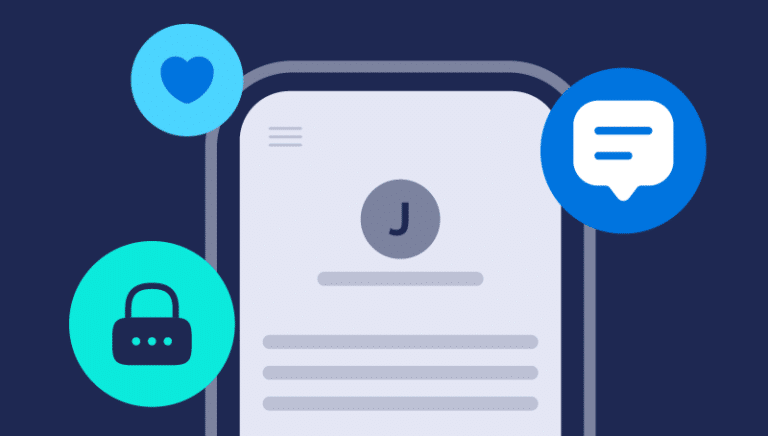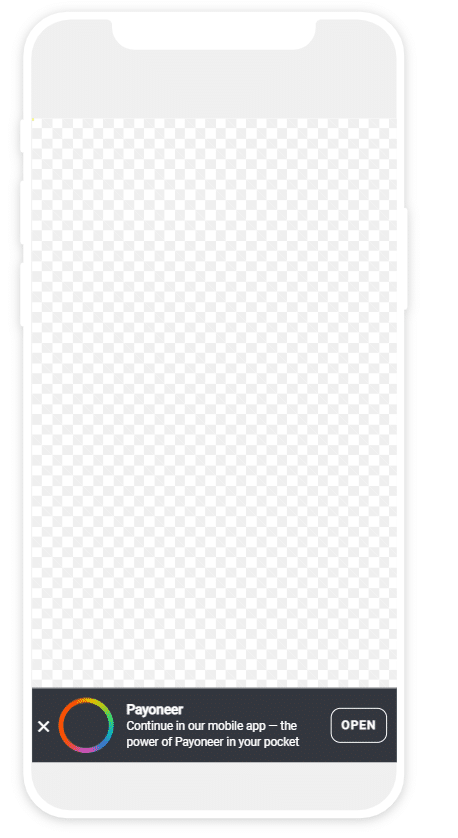According to a recent Google study conducted in India, around 90% to 100% of finance brands’ customers are aware of their financial apps. Sounds great, right? However, the study also found that, despite this awareness, over a three month period after downloading their finance app, 15% to 45% don’t use it. Not so great.
The challenge is two fold:
- Converting mobile and desktop web users to mobile app users is tricky, even when customers have brand affinity.
- Driving app engagement and retention is even harder, as evidenced by the fact that so many users abandon finance apps within the first 90 days.
Why do users delete digital finance apps?
Frustrating experiences can turn users off to your app within seconds. The Google report shows that the most common reasons for not engaging with a finance app include frequent crashes or bugs followed by poor interfaces and security/privacy concerns.
For example, when a user wants to view or download their monthly bank statement, the app should ask for the minimum amount of information required to access the statement, like account selection and time period. If you’re prompting customers with too many options and steps, they’re more likely to switch to another app with a better, faster user experience.
App users also expect near-instantaneous results. If it takes too long to get to where they want to go — like in the case of daytime app updates that cause unexpected downtime or lagging in-app transactions — they’re more likely to drop off and even delete the app.
On the other hand, reducing the number of clicks and time required to perform an action can help finance apps boost satisfaction and retain users. When a user is satisfied with the app experience, good things happen, like increased brand affinity and likelihood to recommend the app to their friends and family.
What do customers expect from finance apps?
When users sign up for a financial app, they often aren’t just looking for transactional services like money sending or monthly statement downloads. They’re looking for helpful, convenient experiences. They ask themselves the following questions: :
- Can you help me achieve my financial goals?
- Can you offer personalized services based on my preferences, while maintaining my security and privacy?
- Can you make my life easier by providing me with consolidated financial data about my accounts and investments?
73% of app users prefer to use a single financial app with multiple functions (compared to only 27% who use multiple apps each with different functionality). This shows that customers prioritize ease of use and a “one-stop-shop” when selecting a digital finance app.
3 ways digital finance apps can drive app engagement and retention
To drive users your mobile app and deliver the seamless, time-saving experiences they expect, here are three practical strategies:
1. Build trust to build loyalty with mobile referrals
51% of app users say the number one reason they would continue to use an app is if it’s proven to be safe and secure, so it’s important to start with trust assurance. The reality is that users trust their peers more than they trust brands. When friends and family recommend an app, users are naturally more inclined to use it. Online reviews from different platforms like Quora, YouTube, Discord, and search engine results pages (SERP) further build trust with potential customers.
To build trust and attract new users, financial apps are increasingly adopting mobile referral programs. These programs reward users for promoting an app to their friends, family, and peer networks. Referrals can usually be shared via text, email, or social media apps. There are also various referral use cases, including friend-to-friend, one-to-many (influencer-driven), and brand-driven.
Referrals are not only effective for new user acquisition, they also drive higher revenue. A Branch study found that users who are referred by others are twice as valuable as compared to other channels, with an average of around 200% to 300% of the conversion rate and revenue per user (ARPU).
Up, an Australian neobank, implemented a referral program called “Hook up a Mate,” where customers earn money for each successful referral. By incentivizing its loyal users to promote its app, Up created a win-win scenario for new and existing customers.
It can be easy to overlook the small details of a referral program — the ones that actually make it successful. The key is shareability. When building a referral program, ask yourself these questions:
- Can customers easily discover and share your referral program with their network?
- Do you provide them with multiple share options to choose from?
- Do your referral links take users directly to the app via deep linking? Can they maintain the user’s referral context through the install process?
Building this kind of functionality on your own can be challenging. It requires different tools and technologies to deliver the seamless experiences users expect. Mobile linking platforms (MLPs) can help you build successful mobile referral programs and enable you to measure results. By providing unique referral deep links that take users directly to app content — with their referral bonuses or rewards automatically applied — MLPs remove the frustration that commonly leads to dropoff during the install process. Plus, data from deep link clicks allows you to see exactly which users and referral campaigns generated app downloads and conversions.
Another key to a successful referral program is making sharing easy and convenient for users. Share sheets enable users to share via whichever channel or platform they prefer. After clicking share, they can choose to copy the link, send via email, or post to a social networking app like WhatsApp, Instagram, or Facebook — all in one tap. Native share sheets also keep customers within the mobile app’s ecosystem, so they can share referrals, promotional discounts, and coupon codes without having to navigate to another platform.
2. Encourage app downloads at influential touchpoints
Taking advantage of online touchpoints like your brand’s website is one of the most optimal ways to drive higher app downloads and direct customers back to your mobile app. To get users to your app, use mobile smart banners that prompt web visitors to continue their experience in the app.
Personalized smart banners are highly effective at acquiring users from your mobile website, regardless of their source (paid or organic). Smart banners target your audience based on behavioral and contextual parameters, which can increase click-through rates by up to 60% compared to standard web banners. They’re also non-intrusive and fit seamlessly into the mobile web experience. Plus, brands can A/B test variations of copy, CTA buttons, and creative to identify which messages drive the most conversions.
Here’s a quick glance at how personalized smart banners work:
So, instead of flooding your website visitors’ screens with floating chat buttons, email signup forms, and a number of dynamic and static elements, use smart banners. They’re simple yet powerful and highly effective. For example, Payoneer, a well-known payment platform, uses Branch’s Journeys smart banners to redirect its web traffic to in-app content. The brand has driven 204K app installs from Journeys, making it the highest contributor to the total app downloads over the last year.
3. Focus on the user experience from pre- to post-install
49% of users say they have installed a finance app but never used it. That’s because they run into frustrating experiences before they’ve even started transacting. 31% of users say it’s because the app requires them to visit their bank’s physical branch to complete the sign-up process. Another 31% find the app design or user experience too complicated. Additionally, 28% of users find the whole sign-up process too complex.
Making onboarding easier is one of the most crucial steps to increase retention. Onboarding should immediately show users the value of your app, demonstrate the key features and functions they need to know, and not overwhelm them with too much information. Getting onboarding right, regardless of what platform or channel app users come from, is key to winning long-term users.
Another key experience to consider is that when users engage with a digital finance app they’re sharing sensitive, personal information. Unlike other app experiences, they expect to be informed of the app updates, scheduled maintenance, and even account details. In an investment app, for example, users likely want frequent updates on the status of their investments: Did the stocks/funds they recently bought fall or rise? By how much? How did this contribute to their overall portfolio?
Most of these updates are sent via email, but many finance apps miss the opportunity to use email as a channel to reengage app users. Consider this example from ET Money: Users are notified every time a successful transaction is made on the ET Money mobile app. The email includes relevant information such as the amount of money invested, transaction type, funds invested in, and more.
By implementing deep links in email campaigns and updates, finance brands can direct users to the exact in-app page they want. This not only enhances convenience but also boosts engagement and conversion rates, as users can effortlessly access relevant information or complete transactions without navigating through multiple screens or menus.
Given the rate at which users abandon digital finance apps, it’s critical to prioritize the user experience above all. Simple yet powerful strategies like adding deep links across your campaigns and interactions can significantly improve retention rates.
To learn Branch can help you acquire and retain financial app users, connect with our team.


























